 Nestled deep in the heart of a large city park at the edge of Sacramento, visitors and school children can find a time machine. This time machine only stops in one time and place: Rhoads School, the 1890’s. Rhoads is a one-room schoolhouse where a pleasant but firm schoolmarm welcomes children and teaches values such as honesty and manners along with reading, writing, and arithmetic.
Nestled deep in the heart of a large city park at the edge of Sacramento, visitors and school children can find a time machine. This time machine only stops in one time and place: Rhoads School, the 1890’s. Rhoads is a one-room schoolhouse where a pleasant but firm schoolmarm welcomes children and teaches values such as honesty and manners along with reading, writing, and arithmetic.
 This one-room school is not a re-creation; it is a fully-restored school originally built in 1872 in Soughhouse, CA. A victim of progress, the school sat unused for many years—alone, but not forgotten.
This one-room school is not a re-creation; it is a fully-restored school originally built in 1872 in Soughhouse, CA. A victim of progress, the school sat unused for many years—alone, but not forgotten.
 During the bicentennial, the Elk Grove Historical Society decided to relocate and restore the school. They had the school lifted up and transported in a perilous journey underneath low-hanging power lines in its trek to Elk Gove Park. Later, junior high students restored the school in a community service project. When the Elk Grove Historical Society had the school restored to aid elementary education, they carefully chose how to do it. They even enlisted the aid of a local high school shop department to build desks identical to those used in the 1800s. Using a lone surviving desk as a guide, the shop constructed brand new desks that look exactly like their antique counterparts.
During the bicentennial, the Elk Grove Historical Society decided to relocate and restore the school. They had the school lifted up and transported in a perilous journey underneath low-hanging power lines in its trek to Elk Gove Park. Later, junior high students restored the school in a community service project. When the Elk Grove Historical Society had the school restored to aid elementary education, they carefully chose how to do it. They even enlisted the aid of a local high school shop department to build desks identical to those used in the 1800s. Using a lone surviving desk as a guide, the shop constructed brand new desks that look exactly like their antique counterparts.
In its new home, Rhoads school helps educate children about their pioneer heritage and the history of the Sacramento valley. As part of their living history program, third grade children take a field trip, dressed in period-appropriate attire and going by period-appropriate names they choose, to get a one-day glimpse into the schooling methods of a by-gone era.
Visiting children warm themselves by a pot-bellied stove fueled with real logs, write on slates with slate pencils, and play outdoor games during recess that children the 1800s played such as jacks, marbles, hoops, and of course, jump rope. Dressing up is part of the fun, I am sure.
 The day I visited, the year was 1894 and the schoolmarm was Mistress Merrill, who teaches so authentically that she insists the children “show their manners” by standing and bowing or curtsying before giving their answers.
The day I visited, the year was 1894 and the schoolmarm was Mistress Merrill, who teaches so authentically that she insists the children “show their manners” by standing and bowing or curtsying before giving their answers.
 She even uses the dunce cap—but only to a volunteer actor/student who “misbehaves” and “has” to wear the dunce cap as punishment. At the end of the dunce cap wearer’s sentence, the teacher invites the miscreant to apologize to the class for wasting their time. She then reveals his part in the charade. He receives applause and a certificate for his performance. (Okay, so that part is not authentic but no one minds.)
She even uses the dunce cap—but only to a volunteer actor/student who “misbehaves” and “has” to wear the dunce cap as punishment. At the end of the dunce cap wearer’s sentence, the teacher invites the miscreant to apologize to the class for wasting their time. She then reveals his part in the charade. He receives applause and a certificate for his performance. (Okay, so that part is not authentic but no one minds.)
 Rhoads school is named after a local hero, John Rhoads. He, after uttering now-famous words, “We can’t call ourselves true men if we don’t help these people” volunteered to lead the rescue party to find survivors of the ill-fated Donner pioneer wagon train. John Rhoads and his rescuers found the starving survivors and even carried one of the survivors, a three-year old girl, on his shoulders all the way back. This choice put John and the lives of the entire group at risk, for they counted on him to guide them back home. He refused to put her down, vowing to carry her or die trying. The child, Naomi Pike, lived into her 90’s and always called John Rhoads her savior.
Rhoads school is named after a local hero, John Rhoads. He, after uttering now-famous words, “We can’t call ourselves true men if we don’t help these people” volunteered to lead the rescue party to find survivors of the ill-fated Donner pioneer wagon train. John Rhoads and his rescuers found the starving survivors and even carried one of the survivors, a three-year old girl, on his shoulders all the way back. This choice put John and the lives of the entire group at risk, for they counted on him to guide them back home. He refused to put her down, vowing to carry her or die trying. The child, Naomi Pike, lived into her 90’s and always called John Rhoads her savior.

 The Rhoads school field trip is a memorable experience for the school children who quickly grow to respect and admire their schoolmarm. Though soft-spoken and even tempered, Mistress Merrill starts out strict and unsmiling. However, everyone is all smiles by the end of the day.
The Rhoads school field trip is a memorable experience for the school children who quickly grow to respect and admire their schoolmarm. Though soft-spoken and even tempered, Mistress Merrill starts out strict and unsmiling. However, everyone is all smiles by the end of the day.
One child recently asked Mistress Merrill, “Did you really teach here in 1894?”
Another said, “You weren’t that strict; you were fun.”
After having lived it for a day, these third-grade children leave Rhoads School with a better appreciation for their heritage and local history.
Heroes and Time Travelers posted first on
http://donnahatchnovels.tumblr.com/

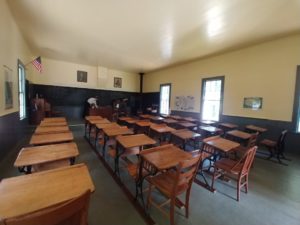
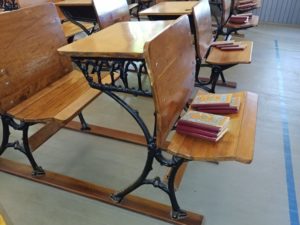
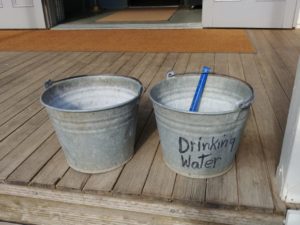

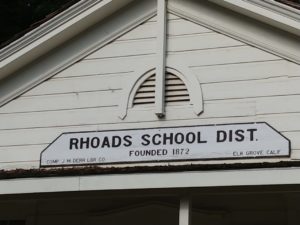
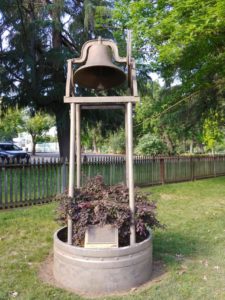
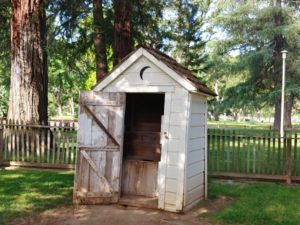
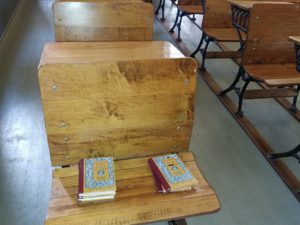
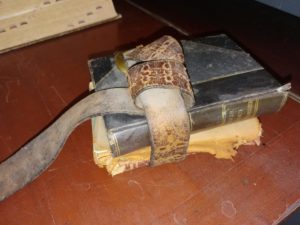
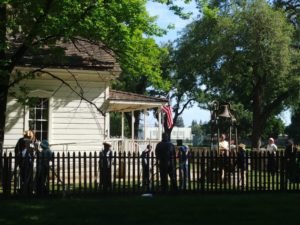
No comments:
Post a Comment